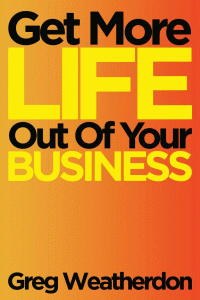I’m frequently asked how one goes about pricing their goods and services for profit. It sounds like a simple enough question, but in reality, it can very complex. Get it right and all should be well. Get it wrong and you’ll be constantly chasing revenue, if only to pay the bills.
Now if your product is a “me too”, you don’t have a lot of flexibility, as the existing products have already established the pricing parameters and therefore you must compete accordingly. Raising your price becomes almost impossible. The only way to improve your profitability is either to reduce costs or add real value for which your customers are willing to pay a premium.
First Mover Advantage
Moving to higher quality or higher value allows you to break free of the commodity pricing, but with potential trade-offs. Chances are you’ll reduce the number of customers but add much higher profits on every sale.
Conversely, if you have a unique product or service, you can leverage the “first mover advantage” and command higher prices. This is because there is no opportunity for your customers to do any comparison pricing, because you’re the only one.
I leveraged this “first mover advantage” when I started the Marketing Resource Group. I expected to maintain my higher margins until such time as competitors caught on to what I was doing. Once that happened, I fully expected to reduce my margins, but that never happened and I maintained my premium pricing and margins.
Unfortunately, the vast majority of businesses, especially new businesses, are not sufficiently unique to enjoy unlimited pricing power. So how do you establish an initial price formula for that new product or service?
A Formula
What I have found to be an effective jumping off point is to use the 1/3, 1/3, 1/3 formula. This formula simply breaks down your costs into fixed and variable and then add the profit element. In practice, it would look something like this:
Fixed Costs $1 (33%)
Variable Costs $1 (33%)
Profit Margin $1 (33%)
_____________________
Selling Price $3
Is this a definitive formula? Absolutely not! But it does give you a wonderful starting point to establish your initial pricing target. In reality, many businesses have higher fixed or variable costs, in those cases, the fixed and variable costs shouldn’t exceed 2/3rd in order to protect your profit margin.
I’m sure there are many more complex pricing theorem out there, but this has worked me and my clients in helping to establish some pricing parameters. It forces you to identify all the actual costs that go into your product or service. Once these costs are identified, you can then layer on your expected profit margin starting with a 1/3.
Adjust Your Profits
By using this simple formula, you will actually be able to see how much profit you expect to make. This is of particular value when you end up in a competitive situation and need to be a little more aggressive in your pricing. Chances are you can’t adjust your cost base, but you can adjust your profit. Seeing how much or how little profit you’ll make on a given proposal, let’s you decide whether it’s worth doing as you’ll no longer be guessing at how much, if any profit you’ll make.
Over time, you will build up enough information on this new product or service to be able to refine or develop your own formula. In the meantime, this Pricing For Profit formula takes out some of the guesswork.
You may also like Revenue Without Profit Is Pointless
Copyright © Greg Weatherdon 2017
Sign up above to receive email notification of the latest update to this blog
Get More LIFE Out of Your Business
You shouldn’t be the hardest working person in your company.
Many small business owners find that even after the struggling start-up years, they’re working too many hours and still managing every aspect of their businesses.
Greg Weatherdon has been there, done that. As an entrepreneur, he learned not only how to get a business to the point of running smoothly, but also how to reduce the number of hours he worked, delegate more responsibility to his employees, and take longer vacations while his business chugged along like a well-oiled machine. And now he is providing the secret to success.
Do you suffer from any of the following?
1. Business ownership isn’t living up to the dream.
2. Endless workdays.
3. You can’t find good people.
4. Profits are less than expected.
5. You can never take a vacation.
You’re not alone. But there is a solution. As Greg demonstrates, with some time and effort, you really can Get More Life Out Of Your Business.





Greg-Read your May 2017 “5 Reasons” and enjoyed it.